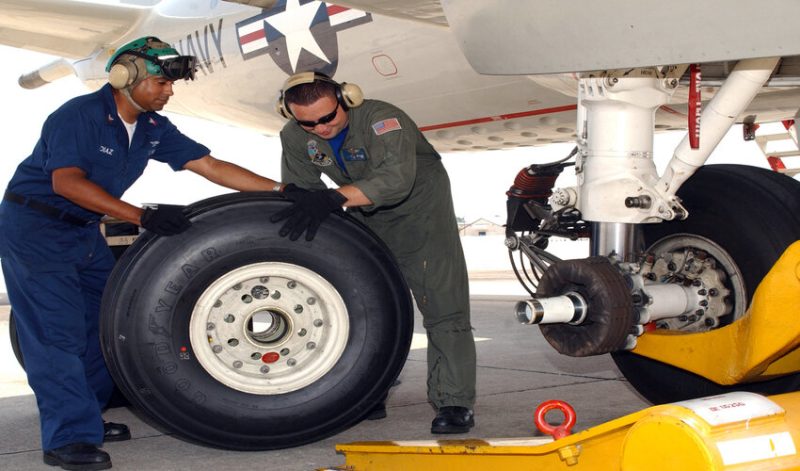
Aviation Tires
Aviation Tires: What Features to Look For?
Compared to automobile tires, aviation tires are more critical for safety. The wear and stress of any landing demands quality and durability. And the inevitable hard landings place greater importance on quality. Also, takeoffs are a factor in overall wear. General aviation pilots play a greater role in deciding when to replace tires than commercial pilots. Most commercial pilots have a maintenance team for inspections and replacements, but not so for most general aviation pilots.
Many factors are involved when choosing a brand, tire size, and tire capacity. Playing roles include the aircraft’s weight, the most used runway surfaces, environmental operating conditions, and more.
Aviation Tire Design
Landings and takeoffs cause friction and wear that tire manufacturers have battled since the early days. The greatest wear is, as you would think, with landings. Unlike automotive tires, aviation-grade tires must be made of more heat-resistant materials, meet the aircraft’s specifications, and have the flexibility demanded.
In flight, an aircraft may gain an electrical charge requiring tires that resist conduction. One factor that is not common knowledge is that, in general aviation, Kevlar is often a component of modern aviation tires.
FAA specifications demand minimal standards assuring quality for the demands of aviation. Manufacturers have made great strides with analysis and engineering standards, including normal and emergency operations specifications.
Reinforcing materials lay at angles to the tire’s rotation direction, providing balance. A common reinforcing material was nylon. Ply ratings were an indication of the number of layers (ply). With advanced technologies, Kevlar use has allowed for fewer layers, making lighter tires that create less heat.
Many believe that more plies are not necessarily better. One AOPA contributor believes that more layers don’t contribute much to durability. Each aircraft is designed for specific tires. More plies decrease the inner diameter of the tire, and the tire is stiffer, affecting performance. Additionally, more layers make tires hotter on landings.
Some Words on Maintenance
Maintaining your aircraft tires means regular inspections, which should occur with every pre-flight check and after every landing. Aircraft tied down outdoors wear out with the heat and sun. Any irregularities should be brought to the attention of your A&P mechanic. Odd wear patterns may be an indication of landing gear problems.
Consider the environment when you are deciding on quality and tire features. Quality tires are more UV resistant.
Bottom Line
You want tires that wear well and come at a reasonable price. There are only slight variations in wear rates. Significant cases of wear are more often due to poor maintenance and not due to the tire’s specifications. When you choose tires, balance price and ratings, knowing that good maintenance and landing habits greatly impact tire wear. Highly rated tires and good flying skills combined with tire care are ideal.
When selecting your tires, consider hydroplaning. Goodyear aircraft tires have been tested for hydroplaning characteristics by the company. Preliminary tests indicate that two tire grooves may perform better than four. But more testing is outstanding for conclusive results.
Tire durability is connected with the depth of the treads. Tires vary in design, appearance, and hardness, but tread depths vary greatly among the brands. Balancing cost against tread depth indicates quality tires create better value. Deeper treads mean there is more rubber to spare, thus increasing durability. Tread depth is likely the most important variable you should consider.
Your Considerations
The aviation tire you choose depends on your takeoff habits and how many hours you put in yearly. Less expensive tires may be appropriate for general aviation pilots who log less than 50 hours in a year. Quality tires are more cost-effective if you are flying every week, doing many touch-and-goes, or landing often on tours. If you use municipal concrete runways, there is less tire wear. On the other hand, if you use asphalt country runways, you will have more wear.
Consider tire features, your pilot behavior, tire quality, and your yearly flight hours. There are many factors to consider. Reach out to your favored aviation parts distributor. There you will find the experts you need.

Aimee Garcia is a senior editor at ReadDive. She has 5+ years of experience in Digital Marketing. She has worked with different IT companies.
